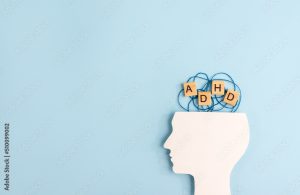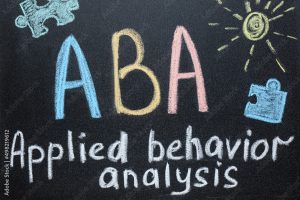Introduction to Behavior Analysis
Behavior analysis is a scientific approach that seeks to understand and modify human behavior. It is based on the principles of behaviorism, which focus on observable behaviors rather than internal thoughts or feelings. Behavior analysis is widely used in various professional settings, including education, healthcare, and business, to help individuals improve their behavior and reach their goals.
The ABCs of Behavior Analysis
The ABC model is the cornerstone of understanding behavior. Antecedents are the triggers that set the stage for a behavior. These can be anything from a specific time of day to the way someone else acts, or even an internal sensation like hunger. It’s essential to pinpoint exact antecedents, as this knowledge allows us to adjust situations to make desired behaviors more likely.
Behavior is the observable action itself. To create effective change, we need to define behaviors with laser-focus. Instead of labeling a child as “disruptive,” we might identify “speaking out of turn” or “leaving their seat without permission.” Detailed definitions make measurement and progress tracking possible.
Consequences are what keep a behavior happening (or extinguish it). They directly impact whether the behavior becomes more or less frequent. Identifying consequences is often about figuring out the behavior’s function. Is it gaining the child attention? Sensory input? A way to avoid something unpleasant? Knowing the payoff lets us change how the environment responds to the behavior.
Reinforcement & Punishment
Reinforcement increases a behavior. Positive reinforcement means adding something desirable – social praise, a tangible reward, or even a pleasant sensory experience. Negative reinforcement involves escape; the behavior removes something the person dislikes, like a chore or a nagging reminder. Effectively using reinforcement means understanding what the individual finds motivating.
Punishment decreases behavior. Positive punishment involves adding an unpleasant consequence, like a verbal reprimand or a loss of privileges. Negative punishment means removing something the person enjoys. However, punishment has limitations and potential side effects. Ethical behavior analysts prioritize reinforcement-based approaches whenever possible.
Importantly, “reinforcer” and “punisher” labels are fluid. Something like a timeout could be reinforcing for one child (escape from demands) while punishing for another (loss of social attention). It’s the effect on the behavior that determines whether something functions as reinforcement or punishment.
Functional Behavior Assessment (FBA)
FBA is the detective work that goes beyond simple “bad behavior.” It’s a systematic process often using interviews, questionnaires, and direct observation, all to understand why a behavior is happening. Only then can we design an intervention that actually tackles the root cause.
Typical behavior functions include gaining attention, acquiring objects or activities, escaping demands or unpleasant sensations, and automatic reinforcement (the behavior feels good to do). Two kids displaying the same behavior (e.g., tantrums) might have wildly different functions behind it. The FBA reveals this.
Interventions based on the function address the underlying need, not just the behavior’s surface appearance. A child who tantrums for escape might be taught to ask for breaks appropriately, making the old behavior unnecessary. If the function is sensory, altering the environment or providing alternative sensory tools is key.
Education
In schools, behavior analysis is a powerful ally for students with behavioral needs and their teachers. Behavior analysts work in tandem with educators and parents. They might conduct FBAs to pinpoint the why of challenging behaviors, design interventions to teach more appropriate replacements, and train teachers to use proactive strategies, reducing disruption for everyone.
Behavior analysis isn’t just about managing problems. It promotes positive learning environments. By analyzing what makes learning successful, analysts help teachers build classrooms where good study habits, participation, and positive peer interaction are reinforced. This benefits all students, not just those already targeted for support.
Successful collaboration is key. Behavior analysts bring specialized knowledge, but teachers know their classrooms and students best. Together, they can create sustainable, practical strategies that benefit everyone in the long term.
Healthcare
Behavior analysis has vital applications throughout the healthcare system. From autism treatment to supporting those with ADHD, anxiety, or addiction, analysis techniques work alongside medical interventions. Behavior analysts assist other healthcare professionals by conducting assessments to contribute to a full picture of the patient’s needs, designing behavioral plans to build desired skills, and implementing interventions that promote overall health and well-being.
Behavior analysis isn’t just about fixing what’s “wrong.” It often supports adherence to medical treatment. For example, a child with diabetes might need help managing their food choices or blood sugar monitoring. Behavior analysts break these complex tasks down and use reinforcement to build life-saving habits.
The goal in healthcare settings is always to improve patients’ overall quality of life. Behavior analysis supports this by addressing behavioral components that impact physical needs alongside emotional and social ones.
Business
The business world might seem an unexpected place for behavior analysis, but it’s a growing application. Behavior analysts help organizations pinpoint what makes teams perform well or dysfunction. This could mean analyzing workflow processes, incentive structures, and the factors that contribute to morale and burnout.
Training and coaching are huge components. Behavior analysts help design onboarding programs that genuinely teach the needed skills, as well as delivering feedback in ways that make change likely, not defensive. They may also coach managers on effective communication and reinforcement strategies to keep employees engaged.
Ultimately, behavior analysis in business is about making the workplace an environment where desired behaviors happen naturally. That leads to increased productivity, happier employees, and better customer experiences, which benefits everyone.
Sports
In sports, behavior analysts look at athletes as whole people. Performance isn’t just about raw skill; it’s influenced by focus, mental resilience, teamwork dynamics, and how an athlete responds to success or failure. Behavior analysts partner with coaches and trainers to get the psychology of performance right alongside the physical side.
Analysis pinpoints factors hindering an athlete. Maybe confidence under pressure needs work, or unhelpful self-talk interferes. Behavior analysts develop targeted strategies to build the needed mental skills. They might use reinforcement, goal-setting, or techniques to shift focus and manage emotional reactions in real-time.
Behavior analysis also helps teams work better together. Understanding communication styles, how feedback is received, and what truly motivates each member allows for fine-tuning of interactions so the whole becomes greater than the sum of its parts.
Conclusion
Behavior analysis is far more flexible than people realize. At its core, it’s the science of how our environment affects our actions. This is useful across many fields! Professionals trained in behavior analysis bring a unique skill set of analyzing problems, figuring out what works, and making those improvements stick long-term. This benefits everyone involved, whether students, patients, employees, or athletes.




